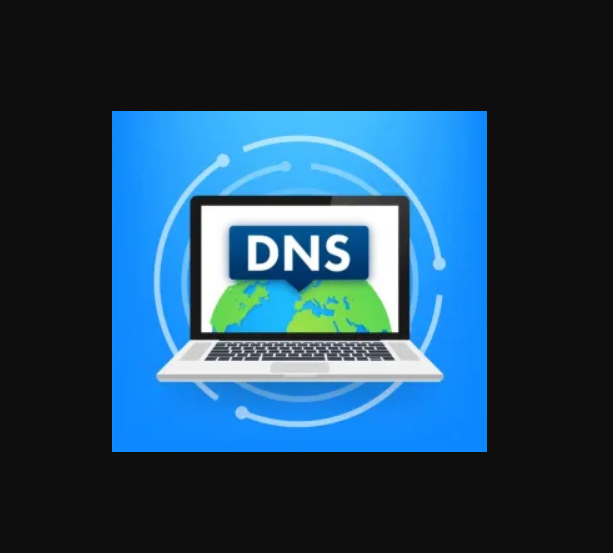Tech Tips
How To Change DNS Server

How To Change DNS Server
What is a DNS server?
A website can’t be visited without first accessing a Domain Name Server (DNS). The Domain Name System (DNS) Server is a server that is specifically used for matching website hostnames (like example.com)to their corresponding Internet Protocol or IP addresses. The DNS server contains a database of public IP addresses and their corresponding domain names.
What Do DNS Servers Do?
Domain Name System handles translating friendly domain names to numeric IP addresses. Your home network typically relies on a DNS Server supplied by your ISP.
After your browser sends the server a domain name, the server goes through a moderately complex interaction with other servers to return the corresponding IP address, thoroughly vetted and verified.
If it’s a much-used domain, the DNS Server may have that information cached, for speedier access. Now that the interaction is down to numbers, the machines can handle getting the pages you want to see.
SEE ALSO: How To Back Up And Restore Files On Windows
What Does “DNS Server Not Responding” Mean?
When you come across a message such as “DNS server not responding” it means that the decentralized naming systems responsible for turning hostnames into IP addresses failed to respond.
There are a variety of reasons these types of DNS errors can occur. Most of them have simple resolutions. Fixing the issue could be as easy as restarting your computer or changing web browsers. DNS servers act as translators.
“DNS Server Not Responding” means that your browser was unable to establish a connection to the internet. Typically, DNS errors are caused by problems on the user end, whether that’s with a network or internet connection, misconfigured DNS settings, or an outdated browser.
They can also be attributed to a temporary server outage that renders the DNS unavailable. Therefore, you might be able to resolve the problem simply by switching browsers. In other cases, you may need to disable connections, change DNS servers, or flush the DNS cache.
You can also read our article on “How to resolve DNS server not responding“
Difficulties DNS Faces
Firstly, if the ISP-supplied DNS servers are slow, or not properly configured for caching, they can effectively slow your connection. This is especially true when you load a page that draws content from many different domains, such as advertisers and affiliates.
Switching to DNS servers optimized for efficiency can speed up your surfing, whether in a home or business setting. Nefarious webmasters set up fraudulent website that looks exactly like PayPal, your bank, or even a gaming or dating site.
They disseminate links to the fake site using spam, malicious adverts, or other techniques. Any hapless netizen who logs in without noticing the fakery has given valuable login credentials to the bad guys. And the fraudsters typically use those credentials to log you into the real site, so you don’t realize anything has happened. A similar attack called DNS hijacking happens on your local computer.
Malware running on the system reaches into the TCP/IP settings and simply switches you over to a DNS server controlled by hackers. Of course, this only works if the malware in question can get past your antivirus.
See Also; the Top 5 Tips And Tricks To Use On Your iPhone 13.
How To Change DNS Server
What’s the Best DNS Server?
DNS attacks and problems occur when DNS isn’t a priority for your ISP. Getting away from these problems can be as simple as switching to a service that makes DNS security and privacy a priority.
Google Public DNS has been available since 2009, with easy-to-remember IP addresses of 8.8.8.8 and 8.8.4.4. Google promises a secure DNS connection, hardened against attacks, as well as speed benefits.
Founded in 2005, OpenDNS has been offering secure DNS even longer. It doesn’t have memorable IP addresses like Google’s but does offer a variety of services. In addition to DNS servers focusing on privacy and security, it offers what it calls FamilyShield servers, which filter out inappropriate content.
The company also offers a premium parental control system that gives parents more granular control over filtering. Its parent company Cisco supplies enterprises with Cisco Umbrella, which includes security and DNS services for businesses.
Starting in 2018 Cloudflare made secure DNS available, at the very memorable IP addresses of 1.1.1.1 and 1.0.0.1. The company also offers a free desktop and mobile app, cleverly named 1.1.1.1, which automates using secure DNS and provides related privacy protection features.
How To Change My Device’s DNS Server?
It’s good advice to change the local DNS settings on your laptops and mobile devices. Just how you do that varies by platform. On Windows 10:
- Press Windows+I to open Settings,
- Click Network & Internet,
- Click Change adapter options,
- Right-click your internet connection and choose Properties,
- Select Internet Protocol Version 4 and click the Properties button,
- Click the item labeled Use the following DNS server addresses,
- Enter the two addresses,
- Click OK, and
- Repeat the process for Internet Protocol Version 6.
-
If you’re using a macOS laptop:
- Select System Preferences from the Apple menu,
- Select Network,
3 Highlight the Wi-Fi connection and click the Advanced button,
- Click the DNS tab,
- Use the plus-sign button to add both IPv4 and IPv6 DNS addresses, and
- use the minus-sign button to remove any existing addresses.
Where old versions of Android made setting your own choice of DNS servers quite difficult, it’s easy in modern versions. Well, almost.
Tips To Change DNS Server
- Tap Settings,
- Choose Network & Internet,
- Tap Advanced,
- Tap Private DNS,
- Tap Private DNS provider hostname, and
- Tap Save.
That next-to-last step is the reason I said it’s almost easy. Android doesn’t let you enter an easy IP address like 1.1.1.1 or 8.8.8.8. Instead, you must enter the corresponding hostname. For Google Public DNS, that’s not too bad— it’s DNS.google. But for Cloudflare, you’ll have to type 1dot1dot1dot1.cloudflare-dns.com.
Changing your DNS can certainly improve your security and privacy. If you’re behind a firewall or need to get around some censorship, changing your DNS can also be part of your strategy to get around it.











